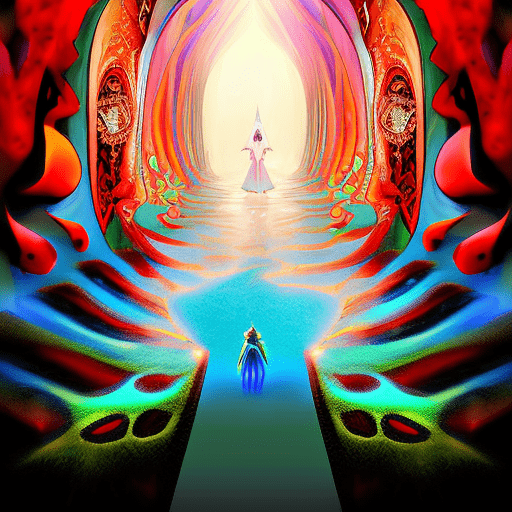One-line summary: Alice in Wonderland is a whimsical tale that takes readers on a fantastical journey through a topsy-turvy world filled with peculiar characters and nonsensical situations.
Down the Rabbit Hole
Alice, a young girl with a vivid imagination, finds herself bored one sunny afternoon. As she daydreams by a riverbank, she spots a talking White Rabbit in a waistcoat, muttering about being late. Curiosity gets the better of her, and she follows the rabbit down a rabbit hole, embarking on a surreal adventure.
The Mad Hatter’s Tea Party
During her journey, Alice encounters a host of eccentric characters, including the Cheshire Cat, the Queen of Hearts, and the Mad Hatter. At the Mad Hatter’s tea party, Alice is bewildered by the nonsensical conversations and the perpetual tea time. The Hatter and the March Hare constantly confuse her with riddles and unanswerable questions, leaving her feeling frustrated and perplexed.
The Queen’s Croquet Ground
Alice’s adventures continue as she finds herself in the Queen of Hearts’ croquet ground, where the Queen’s temper and love for beheadings are notorious. Alice witnesses the absurdity of the Queen’s court, where animals are put on trial for ridiculous crimes and the Queen’s favorite phrase is “Off with their heads!” Alice’s attempts to make sense of the chaos only lead to more confusion and chaos.
Throughout her journey, Alice experiences numerous changes in size, from growing taller to shrinking smaller, which further adds to the topsy-turvy nature of Wonderland. She encounters talking animals, such as the grinning Cheshire Cat, the philosophical Caterpillar, and the sleepy Dormouse, each offering their own brand of wisdom or whimsy.
Alice’s adventures in Wonderland are filled with absurdity, wordplay, and clever puns, challenging the logic and reason she is accustomed to in the real world. The story is a reflection of the nonsensical aspects of life and the absurdity of societal rules and expectations. It encourages readers to embrace their imagination, question authority, and challenge the status quo.
- Alice in Wonderland is a whimsical tale that takes readers on a fantastical journey through a topsy-turvy world filled with peculiar characters and nonsensical situations.
- The story challenges the logic and reason of the real world, encouraging readers to embrace their imagination and question authority.
- Alice’s encounters with eccentric characters and her changing size add to the topsy-turvy nature of Wonderland.
“I can’t go back to yesterday because I was a different person then.” – Lewis Carroll, Alice in Wonderland
In conclusion, Alice in Wonderland is a timeless classic that invites readers to escape reality and immerse themselves in a world of imagination and absurdity. Through Alice’s journey, we are reminded of the importance of embracing our curiosity, challenging societal norms, and celebrating the wonder and magic of the unknown. So, follow the White Rabbit, step through the looking glass, and let your imagination run wild in Wonderland.












